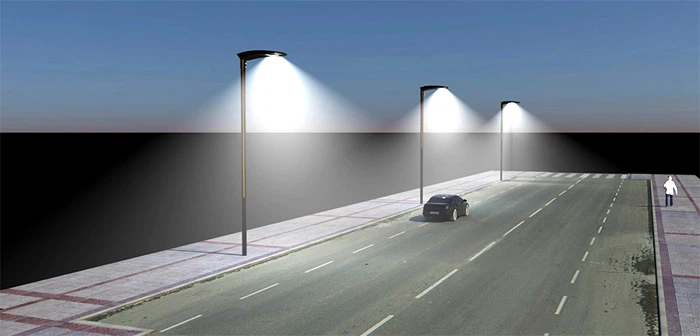Urban areas worldwide are continuously exploring ways to improve efficiency, safety, and sustainability. One of the most impactful advancements in this regard is the development of advanced street lighting control systems. These systems offer a transformative approach to managing public lighting, providing substantial energy savings and enhancing public safety. This article examines the role of street lighting control in modern cities, highlighting its benefits and applications.
Understanding Advanced Street Lighting Control
Street lighting control systems have evolved significantly over the years. Traditional systems often operated on fixed schedules, leading to inefficient energy use and limited flexibility. Advanced street lighting control systems, however, utilize cutting-edge technology to optimize lighting performance based on real-time data.
What Is Street Lighting Control?
Street lighting control refers to the use of technology to manage and adjust street lighting based on various factors such as time of day, traffic flow, weather conditions, and occupancy. These systems typically include smart sensors, centralized management platforms, and communication networks that enable dynamic control and monitoring of streetlights.
The Impact of Street Lighting Control on Energy Savings
Energy consumption is a major concern for municipalities, and street lighting accounts for a significant portion of urban energy use. Advanced street lighting control systems can dramatically reduce this consumption through various means:
1. Dynamic Dimming and Brightening
One of the key features of modern street lighting control systems is the ability to dynamically adjust lighting levels. Smart sensors detect ambient light, traffic, and pedestrian movement, allowing the system to dim lights during low-activity periods and brighten them when activity increases. This ensures that energy is used only when necessary, leading to substantial savings.
2. Use of Energy-Efficient LEDs
Many advanced street lighting control systems incorporate energy-efficient LED lights. LEDs consume significantly less energy than traditional lighting solutions and have a longer lifespan, reducing both energy costs and maintenance expenses. When combined with smart control systems, LEDs further enhance energy efficiency.
3. Centralized Management and Monitoring
Centralized management platforms allow city officials to monitor and control streetlights remotely. These platforms provide real-time data on energy usage and system performance, enabling more efficient management and quick response to issues. The ability to analyze and optimize lighting schedules based on data further enhances energy savings.
Enhancing Safety with Street Lighting Control
Public safety is a critical aspect of urban planning, and street lighting plays a vital role in ensuring safe environments for residents and visitors. Advanced street lighting control systems contribute to safety in several ways:
1. Improved Visibility
Smart street lighting systems provide optimal lighting levels based on real-time conditions, ensuring that streets and public spaces are well-lit when needed. Enhanced visibility reduces the risk of accidents and deters criminal activity, contributing to safer urban environments.
2. Responsive Lighting for Emergencies
In emergency situations, such as accidents or natural disasters, advanced street lighting control systems can be programmed to provide maximum illumination to aid first responders. This capability ensures that emergency services can operate effectively and that the public remains safe.
3. Adaptive Lighting for Pedestrian and Traffic Safety
Adaptive lighting systems adjust street lighting based on pedestrian and vehicular activity. For instance, lights can be programmed to brighten when pedestrians are detected at crosswalks or when traffic levels increase. This adaptive approach enhances safety for both pedestrians and drivers.
Real-World Applications of Advanced Street Lighting Control
Several cities around the world have implemented advanced street lighting control systems, showcasing their effectiveness in achieving energy savings and enhancing safety:
1. Oslo, Norway
Oslo’s smart street lighting system utilizes adaptive lighting technology and a centralized management platform to optimize energy use and improve public safety. The system has reduced the city’s energy consumption by 62% and provided better illumination of public spaces.
2. Paris, France
Paris has integrated smart sensors and LED lights into its street lighting network, allowing for dynamic control based on real-time data. The system has led to significant energy savings and improved visibility in key areas, contributing to enhanced public safety.
3. Adelaide, Australia
Adelaide’s smart street lighting initiative focuses on sustainability and safety. The city has deployed a comprehensive system that includes smart sensors, centralized management, and energy-efficient LEDs. This has resulted in a 30% reduction in energy consumption and improved lighting conditions for pedestrians and drivers.
Future Trends in Street Lighting Control
The future of street lighting control is promising, with ongoing advancements in technology poised to deliver even greater benefits. Emerging trends include:
1. Integration with Smart City Solutions
Street lighting control systems are increasingly being integrated with other smart city solutions, such as traffic management and environmental monitoring systems. This integration creates a more cohesive urban infrastructure, enabling cities to manage resources more efficiently and respond to changing conditions.
2. Artificial Intelligence and Machine Learning
Artificial intelligence (AI) and machine learning are expected to play a significant role in the future of street lighting control. These technologies can analyze vast amounts of data to predict lighting needs, optimize energy use, and improve system performance.
3. Enhanced Connectivity and Communication
Advancements in wireless communication technologies will further enhance the capabilities of street lighting control systems. Improved connectivity will enable more reliable and efficient communication between streetlights and central management platforms, facilitating real-time adjustments and better system management.
Conclusion
Advanced street lighting control systems are transforming urban environments by providing significant energy savings and enhancing public safety. Through dynamic dimming, energy-efficient LEDs, and centralized management, these systems optimize lighting performance and reduce energy consumption. Furthermore, they enhance safety by improving visibility, providing responsive lighting in emergencies, and adapting to pedestrian and traffic activity. As technology continues to evolve, the potential for even greater benefits from street lighting control systems will only increase, making cities smarter, safer, and more sustainable.



